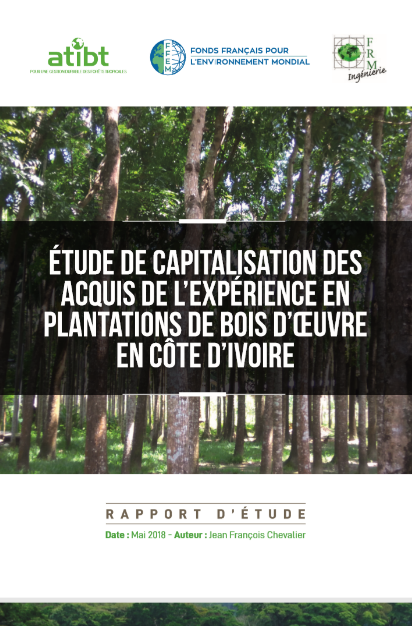

11.10.2018
As part of the implementation of the FLEGT-REDD project funded by the FFEM, the ATIBT commissioned three consulting firms to carry out studies to feed the reflection on the development of concepts of pilot projects for innovative plantations for lumber, firewood and agricultural products. The three studies are finalized and have been published and are available on the ATIBT website in French (available here) .
Here you can read the news in French that details the content and analyses of these studies.
The capitalization study of the experience of timber plantations in Ivory Cost (available here) : The analysis of the experiences of forest plantations in the Republic of Côte d’Ivoire (RCI) has been capitalized under the prism of diversification opportunities for natural forest concessions. Reforestation in RCI is above all a legal constraint instituted in 1994 in the face of the great threat of disappearing forest resources

The study of the situation of the legality and the regulations relating to the plantations of lumber (available here) : in five countries (Gabon, Congo, DRC, Cameroon, RCI), this inventory made it possible to show the many obstacles to the development of plantations while proposing solutions.
The opportunity study of agroforestry projects under shading of forest tree species (available here) was aimed at evaluating agroforestry project opportunities with a timber objective by rehabilitating agricultural cash crops (coffee, cocoa type). under shade of forest species, and voluntarily went to 2 countries with contexts and development paths of cocoa and forest / wood quite different, Cameroon and Côte d’Ivoire.
The reflection initiated by these studies will continue, and will be organized initially in a working group, to test the interest of the different participants and validate the relevance of such an approach, given different factors: real interest of forestry companies for this diversification, complementarity with their model, technical, organizational, financial and regulatory factors (notably land) likely to make possible commitments on their part. The participants in this reflection come from different horizons: design offices, research centers, professionals, forestry companies, plantation companies, etc.